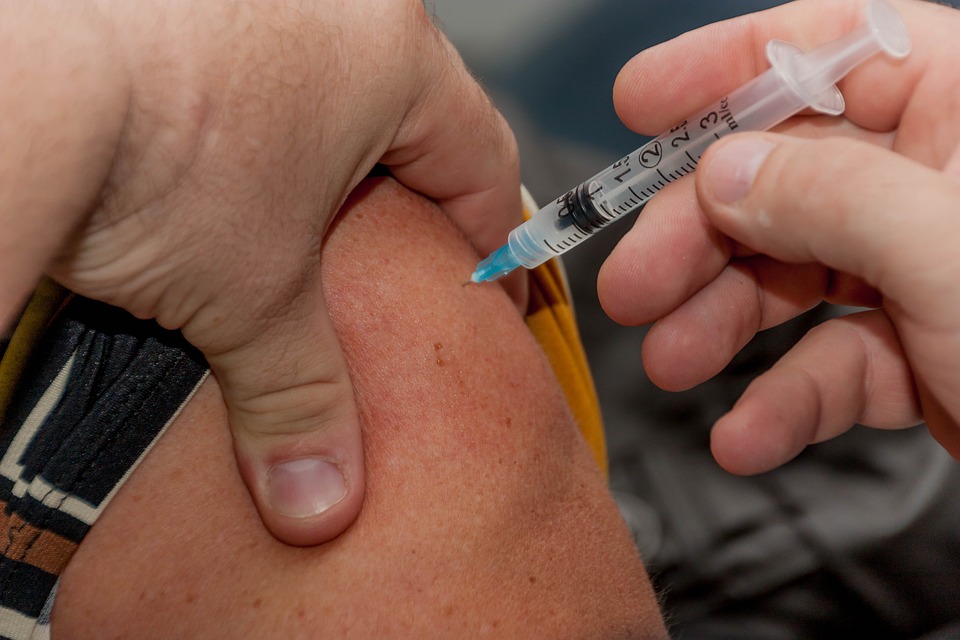Manitoba Families Encouraged to Get Flu Shot This Fall
 October 13, 2017
October 13, 2017
As influenza viruses begin to circulate, public health officials are encouraging Manitobans to get their free vaccine, Health, Seniors and Active Living Minister Kelvin Goertzen announced today at the official launch of the 2017-18 influenza immunization campaign.
“The flu vaccine provides protection against this serious illness,” said Goertzen. “Getting the vaccine will not only protect you, but your friends and family. I encourage Manitoba families to take the time to get immunized this fall.”
Influenza, also known as the flu, can spread easily from one person to another through coughing, sneezing or by touching objects contaminated with the flu virus and then touching your mouth, eyes or nose. In addition to getting immunized with a flu vaccine every fall, Manitobans can minimize the risk of getting or spreading seasonal flu by covering coughs and sneezes, and washing their hands regularly.
“Last year, 150 Manitobans diagnosed with influenza were hospitalized and the virus contributed to the death of 12 Manitobans,” said Dr. Elise Weiss, acting chief provincial public health officer. “This highlights just how important it is for all Manitobans six months of age and older to get immunized, preventing infection and protecting themselves and others.”
The annual flu vaccine is available to all Manitobans, but is extremely important for people at increased risk of serious illness from the flu, along with their caregivers and close contacts. This includes:
seniors 65 years of age and older;
residents of personal care homes or long-term care facilities;
children six to 59 months of age;
individuals with chronic health conditions such as diabetes, anemia, obesity, cardiac or pulmonary disorders;
pregnant women;
health-care workers and first responders;
regular caregivers of children up to five years of age; and
Indigenous people.
Manitobans over the age of 65 should also get a pneumococcal (Pneu-P-23) vaccine at the same time as the flu vaccine. The vaccine helps protect against pneumococcal disease including a serious type of pneumonia, blood infections and meningitis.
Both the flu and the Pneu-P-23 vaccine are offered at no charge for people aged 65 and older as well as to some people two years of age and older who are at increased risk of pneumococcal infection. Most people need only one dose of this vaccine.
As an alternative to the regular flu shot, some Manitobans may be eligible to receive the FluMist Quadrivalent vaccine in the form of a nasal spray. In addition, Manitoba is the first province in Canada to introduce a high-dose flu vaccine to better protect vulnerable residents of personal care homes from influenza.
To get a free flu vaccine and/or Pneu-P-23 vaccine, visit local public health offices, nursing stations, doctor’s offices, pharmacy ACCESS Centres or the nearest immunization clinic. Remember to contact providers first to check for flu and/or Pneu-P-23 vaccine availability. Local pharmacists can provide immunization services to people seven years of age and older.
Regional health authorities will also soon begin immunization clinics. Check the Manitoba influenza website or contact Health Links–Info Santé at 204-788-8200 in Winnipeg or 1-888-315-9257 (toll-free) outside of Winnipeg for dates, times and locations.
The minister noted that while the vaccine benefits Manitobans by keeping them healthy, it also reduces strain on the health-care system.
“People who get influenza may get seriously ill and have to see a doctor or even end up in hospital,” said Goertzen. “When people stay healthy, it reduces pressure on the health-care system by keeping people out of emergency rooms and clinics.”
For more information about the flu, visit www.gov.mb.ca/health/flu/index.html.

![]() January 14, 2025
January 14, 2025








![]() January 14, 2025
January 14, 2025![]() January 13, 2025
January 13, 2025![]() January 11, 2025
January 11, 2025![]() January 11, 2025
January 11, 2025![]() January 10, 2025
January 10, 2025![]() January 10, 2025
January 10, 2025
![]() October 14, 2017
October 14, 2017
![]() October 13, 2017
October 13, 2017
![]() October 13, 2017
October 13, 2017
![]() October 12, 2017
October 12, 2017
![]() October 12, 2017
October 12, 2017